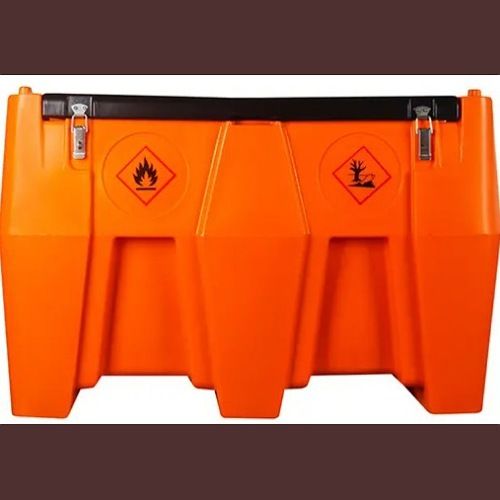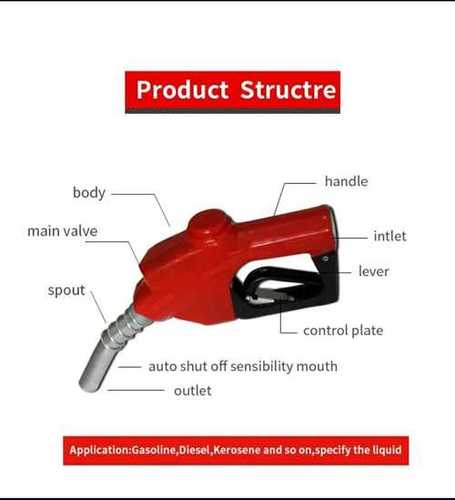

Diesel Fuel Transfer Pump
26000.0 INR/Piece
Product Details:
- Usage Industrial
- Material Metal
- Power Electric
- Product Type Diesel Fuel Transfer Pump
- Fuel Type Diesel
- Color Red Black
- Pressure Medium Pressure
- Click to view more
X
Diesel Fuel Transfer Pump Price And Quantity
- 10 Number
- 26000.0 INR/Piece
Diesel Fuel Transfer Pump Product Specifications
- Metal
- Industrial
- Red Black
- Diesel Fuel Transfer Pump
- Electric
- Medium Pressure
- Diesel
Diesel Fuel Transfer Pump Trade Information
- 10 Number Per Day
- 5-21 Days
- Cartoon box
- All India
Product Description
The Diesel Fuel Transfer Pump is a high-performance kind of solution that transfers diesel fuel easily. Operating under a wide voltage of 12V up to 24V, this single-line parallel-type pump is suitable to fit any power system. Boasting a 40-liter per-minute pump capacity with a flow rate of 40 to 70 liters, this model will meet your fuel-traveling efficiency goals.
Designed for durability the high-pressure Diesel Fuel Transfer Pump has a head dimension of 5 meters to supply sufficient pressure required for pumping the fuel. The inlet and outlet are conveniently dimensioned to an equivalent of 3/4 inch which greatly simplifies removing the original fuel line and replacing it with this newly developed gadget. Available in Stainless Steel or Cast Iron, this Diesel Fuel Transfer Pump is built to work in even the toughest of environments whilst providing longevity of use.
The pump used in the system functions through centrifugal force in order to deliver the fuel in a smooth and optimum manner. It is fitted with standard parts such as a copper or stainless steel impeller, either mechanical or packing seals, a strong shaft, high precision bearings, and a unique double suction sealing ring for efficiency and durability. Improve your fuel transfer with this effective Diesel Fuel Transfer Pump.
Diesel Fuel Transfer Pump Specifications:
1. Voltage: 12 V
2. Capacity: 40 L/min
3. Max Flow Rate: 40-70
4. Head: 5 m
5. Current: 12V, 24V, 220 VAC
6. Inlet And Outlet: 3/4"
7. Material: Metal
FAQ of Diesel Fuel Transfer Pump :
Q. What is a diesel fuel transfer pump?
A: A diesel fuel transfer pump is a device used to move diesel fuel from one location to another. It is commonly used for transferring fuel from storage tanks to vehicles, equipment, or generators.
Q. Why do I need a diesel fuel transfer pump?
A: Diesel fuel transfer pumps are essential for efficiently and safely moving diesel fuel in various applications. They are particularly useful for refueling vehicles and equipment in remote locations, farms, construction sites, and other places without easy access to fuel stations.
Q. How does a diesel fuel transfer pump work?
A: Diesel transfer pumps typically use an electric or manual mechanism to draw fuel from a source tank and push it into a receiving tank or vehicle. The pump creates suction or pressure to move the fuel through hoses and nozzles.
Q. What are the main types of diesel fuel transfer pumps?
A: There are several types of diesel fuel transfer pumps, including electric, manual, and battery-operated pumps. Electric pumps are the most common and can be further categorized as submersible, pedestal, or rotary vane pumps.
Q. How do I choose the right diesel fuel transfer pump for my needs?
A: When choosing a pump, consider factors like the flow rate, power source (electric or manual), the distance the fuel needs to be transferred, the type of containers or vehicles youll be working with, and the fuels viscosity. Its important to match the pump to your specific requirements.
Q. What safety precautions should I take when using a diesel fuel transfer pump?
A: Safety is crucial when handling diesel fuel. Some key safety precautions include wearing protective gear, working in a well-ventilated area, grounding the equipment to prevent static electricity, and having appropriate spill containment measures in place.
Q. How often should I maintain my diesel fuel transfer pump?
A: Regular maintenance is essential to ensure your pump functions properly. This includes cleaning filters, checking hoses and nozzles for damage, and inspecting the pumps components. Follow the manufacturers recommendations for maintenance intervals.
Q. Can diesel fuel transfer pumps be used with other types of fuels?
A: Diesel fuel transfer pumps are designed for use with diesel fuel. Using them with other fuels, such as gasoline or kerosene, can be dangerous and may damage the pump. Its essential to use the appropriate pump for each type of fuel.
Q. Can I use a diesel fuel transfer pump for bulk fuel storage?
A: Yes, diesel fuel transfer pumps are often used for bulk fuel storage, especially in agricultural, industrial, and construction applications. These pumps can help fill storage tanks efficiently and maintain fuel inventory.
Q. Are there any environmental regulations to consider when using diesel fuel transfer pumps?
A: Yes, depending on your location and the scale of fuel transfer operations, there may be environmental regulations that you need to follow. Its important to be aware of local, state, and federal regulations related to fuel handling and storage to avoid potential fines or penalties.
Reliable 12V Diesel Fuel Transfer Solution
This pump is engineered for seamless diesel transfer in industrial settings, with a 12V electric drive ensuring secure and efficient operation. The single line parallel design supports steady flow rates, and the durable metal body resists industrial wear and tear, guaranteeing longevity in harsh environments.
Versatile Applications For Multiple Users
Whether you are a manufacturer, supplier, or service provider, this diesel fuel pump is suitable for various industrial sectors. Its compatibility with medium-pressure requirements makes it adaptable for a range of fuel transfer tasks, supporting different scales of operation in India.
FAQs of Diesel Fuel Transfer Pump:
Q: How does the 12-volt diesel fuel transfer pump operate?
A: The pump operates using a 12-volt electric power supply. When connected to a compatible power source, it draws diesel through its single line parallel design and transfers it efficiently at medium pressure.Q: What materials are used in the construction of this transfer pump?
A: The pump is made from high-quality metal, providing durability and resistance to corrosion, which is essential for consistent industrial use and longevity.Q: When is it appropriate to use this diesel fuel transfer pump?
A: This pump is ideal for situations requiring efficient diesel transfer, such as fueling industrial machinery, vehicles, or storage tanks in workshops, factories, and industrial plants.Q: Where can the diesel fuel transfer pump be utilized?
A: This pump is designed for industrial environments across India and can be used in settings like factories, manufacturing facilities, transport depots, and fuel storage sites.Q: What is the process for installing and operating the pump?
A: To install, simply connect the pump to your diesel fuel source and a suitable 12V electric supply. Follow the manufacturers guidelines to ensure safe and efficient operation and maintenance.Q: What are the advantages of using this Grade A, medium pressure diesel pump?
A: Its Grade A rating ensures high performance and reliability. The pump offers ease of use, efficient fuel transfer, and durability, backed by a 1-year warranty, making it a valuable addition to any industrial setup.Q: What warranty support is available for this diesel transfer pump?
A: This product comes with a 1-year warranty, providing peace of mind and coverage against any manufacturing defects during normal industrial usage.Tell us about your requirement

Price:
Quantity
Select Unit
- 50
- 100
- 200
- 250
- 500
- 1000+
Additional detail
Mobile number
Email







 English
English Spanish
Spanish French
French German
German Italian
Italian Chinese (Simplified)
Chinese (Simplified) Japanese
Japanese Korean
Korean Arabic
Arabic Portuguese
Portuguese